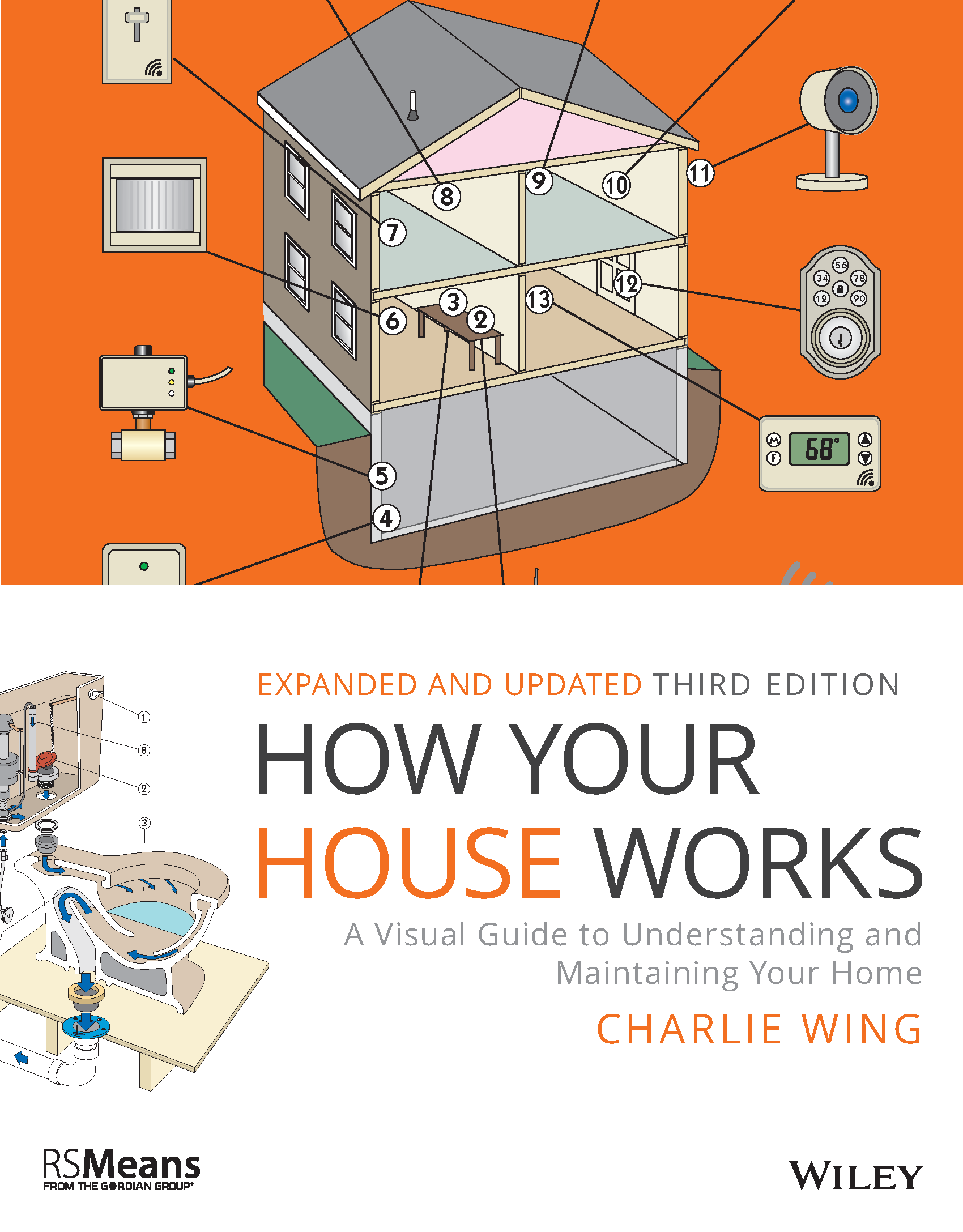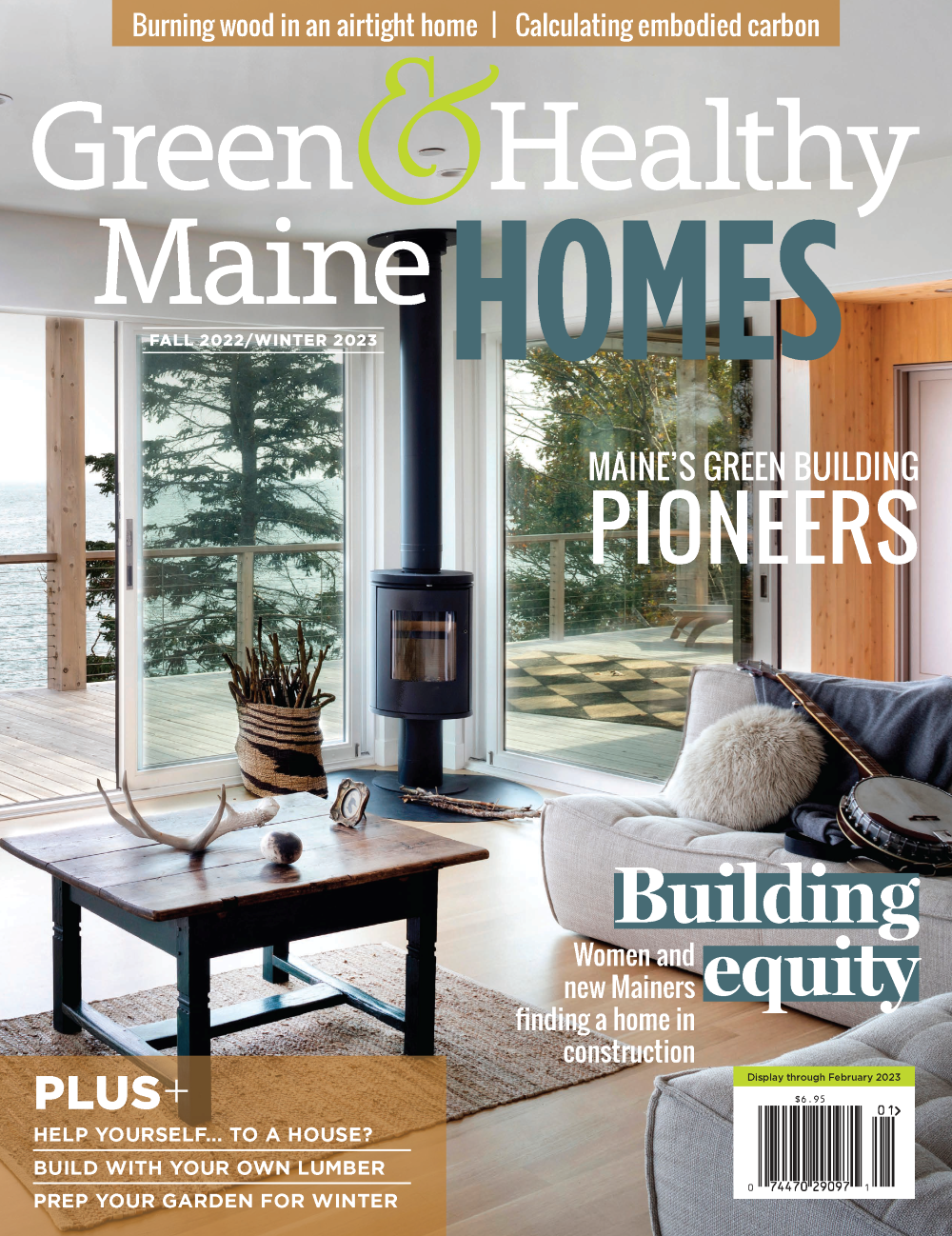Charlie Wing
Charlie Wing | Maine’s green building pioneers
Courtesy photo
CHARLIE WING grew up on a farm near Brunswick and spent his first 11 summers with his grandfather, a lobsterman, boatbuilder and ice harvester in Harpswell.
He received a degree in physics from Bowdoin College and a Ph.D. in Physical Oceanography from MIT, where he stayed on to develop research equipment for the Woods Hole Oceanographic Institution and NASA. He eventually returned to Maine, dedicating his life ever since to explaining how things work: teaching physics at Bowdoin; co-founding two of America’s first DIY house-building schools, the Shelter Institute and Cornerstones; developing the first Department of Energy-approved home energy audit; writing, creating and hosting a national PBS series on energy conservation, Housewarming with Charlie Wing; and appearing on radio and television, including the Discovery Channel and the Today Show. An authority on homebuilding, remodeling, and repair, he has written more than a dozen books on these topics, including How Your House Works and the bestseller The Visual Handbook of Building and Remodeling, coming out in its fifth edition next spring with new sections on anticipating sea level rise, defending against wildfires, building in wind-resistance, and solar electricity.
Dan Kolbert, a high-performance builder is one of many in the sector who laud Wing’s work. “Charlie has had an enormous impact on home building both in Maine and beyond,” Kolbert says. “He’s also one of the few people in the building world to bridge the early super-insulation era of the 1970s and our current building science-driven work. Even if you’ve never read his books (and you should), you’ve read books by people he’s influenced.”
Note: the following interview has been edited for clarity and length.
What was your path to green building?
Things started off fortuitously. After coming back to Maine, I wanted my kids to have the same sort of surroundings I’d had growing up, so I bought a 1790 farmhouse and moved in. That same year, I also read a book by Rex Roberts, Your Engineered House, which changed my life. An engineer at MIT, he took apart a house from an engineering point of view. I also had an opportunity at Bowdoin to teach a senior seminar on solar energy and heat loss in homes. And Maine was a hotbed for the back-to-the-land movement then, so I didn’t feel like a voice in the wilderness.
What do you think have been your greatest accomplishment(s) in this area?
My goal has been to demonstrate to people via pictures, words, or doing hand work that a house is actually a simple thing. I wanted to demystify the workings and construction of a house. I compare this to being in a lifeboat: we are all obligated to grab an oar and do what we can to move forward. And I’m still making my way and paddling, and though I’m not actually building, I’m still providing a necessary part of the solution.
Courtesy photo
How do you feel about green building’s evolution in the U.S.?
It’s progressed very slowly for various reasons. We need a crisis that will force people to acknowledge the problems, pitch in and help bring about change. Great work has certainly been done, but when costs and benefits curves cross, and people realize that they will save money this way, that’s when things will accelerate. The looming energy crisis will hit everybody. It will be forced upon us. We will have to solve the affordability crises—people need places to live and food to eat. Then we will be forced to go green.
What do you think is the biggest challenge in Maine in the housing sector today?
Affordable housing. In South Portland, for example, the average cost of a home has gone up 30% in a single year.
What changes would you like to see in the field?
I’d like to see more attention paid to downsizing houses—the easiest way to save energy in a home is to make the house smaller. My current interest is tiny homes. The smallest house I’ve lived in was 240 square feet, and I look back on it as the best living experience ever—it was like living on a boat. I loved it and heated it with a Jøtul woodstove. I recently moved into a 600-square-foot home; I heat and cool it with one heat pump. My largest electric bill has been $90, and in summer, my largest one was $30. And if people build houses right, the interior temperature will only drop 10 degrees overnight. The first step in lowering energy costs is using less energy. A BTU saved is a BTU earned.
What advice would you give someone who wants to go into green building today?
Read, read, and read—there are so many good books on the subject. Volunteer at Habitat for Humanity, especially the green-oriented projects; it’s a great organization that’s all about higher-performance housing. Plunge in and start building: go to work for an established contractor so you can learn what building materials are and the skills to put a house together. Then find an idealistic builder and sell yourself based on your knowledge and skills. Your most powerful tool is your head—you don’t need brute strength.
If people want to educate themselves about this field, what resources do you recommend?
First read Limits to Growth: The Thirty-Year Update by Donella H. Meadows, Dennis L. Meadows, Jørgen Randers; it shows us where we stand and where we need to go from here—it’s highly motivational. Then, to learn about high-performance building and building science, read the guides by Joseph Lstiburek [available on buildingscience.com]. Also read Abraham Maslow’s classic, Toward a Psychology of Being. More and more, the rich are getting richer, while there are more and more homeless. According to Maslow’s hierarchy, people who worry about food, shelter and being shot are not thinking about things like pollution and green building.
This article appeared in the Fall 2022 edition of Green & Healthy Maine HOMES. Subscribe today!
Find Maine experts that specialize in healthy, efficient homes in the Green Homes Business Directory.















